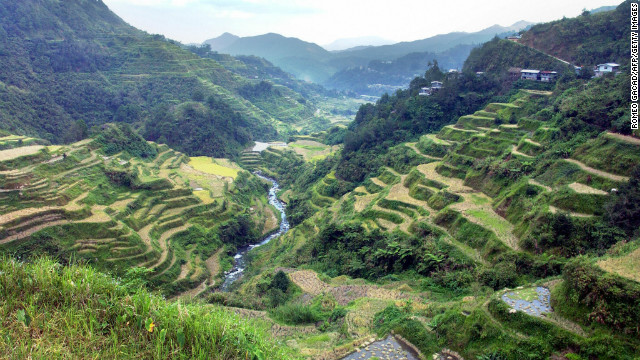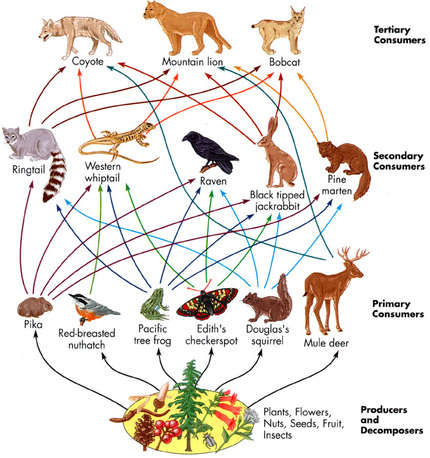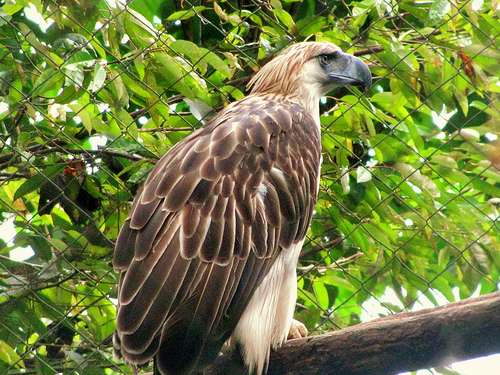Gold’s qualities make it one of the most coveted metals in the world. Not only can it be beautifully shaped and sculpted, the yellow metal conducts electricity and does not tarnish.Gold is a highly efficient conductor of electricity and is used in most electronic devices, including cell phones. Gold contained in connectors, switches and relay contacts allows phones to remain free of corrosion. Presently, copper is used in building construction, power generation and transmission, electronic product manufacturing, and the production of industrial machinery and transportation vehicles. Copper wiring and plumbing are integral to the appliances, heating and cooling systems, and telecommunications links used every day in homes and businesses. Copper is an essential component in the motors, wiring, radiators, connectors, brakes, and bearings used in cars and trucks.
The Ok Tedi mine is an open pit mine, which means that the native rock and other sediments are removed from a large tract of land to reach the wanted substances. The mine uses techniques such as blasting and drilling to extract the rock (Kentucky Coal Education) ("OK Tedi Mine, Oceania, Papua New Guinea"). The excavated rock is then crushed into 200 mm pieces by gyratory crushers, then ground into sand on a grinding circuit including “semi-autogenous grinding mills and ball mills” ("OK Tedi Mine, Oceania, Papua New Guinea"). The ore is then placed in flotation cells with reagents that create air bubbles that separate the copper and gold from the other materials. These compounds then float to the surface and are able to be collected ("OK Tedi Mine, Oceania, Papua New Guinea"). It is then sent through a pipeline to the Kiunga river port and is transported to consumers ("OK Tedi Mine, Oceania, Papua New Guinea"). After it has been retrieved, the ore is first crushed into 200 mm pieces by gyratory crushers, then ground into sand on a grinding circuit that includes "semi-autogenous grinding (SAG) mills and ball mills" ("OK Tedi Mine, Oceania, Papua New Guinea"). The sand is then placed in flotation cells with reagents to create air bubbles, which attract the copper and gold minerals. Later, these compounds float to the surface for collection ("OK Tedi Mine, Oceania, Papua New Guinea"). The condensed slurry is sent through a 157 kilometer (97.5 mile) pipeline to the river port of Kiunga, where it is transported to consumers ("OK Tedi Mine, Oceania, Papua New Guinea").
According to the World Wide Fund for Nature (WWF), “Up to 80,000 tonnes of waste rock and 120,000 tonnes of tailings are disgorged from the Ok Tedi/Fly River system - every day. In addition, 30 million tonnes of tailing ‘fine sand’ are discharged annually into local rivers.” (WWF) As a result, the lifestyle of around 30,000 locals, most notably the Yonngom, a group of about 4,500 living in the Lower Ok Tedi area, has been disrupted. Due to river pollution, they are no longer able to sell their garden produce, and the fish stocks have been severely depleted. "Ok Tedi’s reports revealed that fish stocks in the upper Ok Tedi had declined between 50% and 80% from pre-mining levels." (WWF).
According to the Australian Conservation Foundation (ACF), by the 1990s the first 70 km of the river was "almost biologically dead and species diversity over the next 130 km had been dramatically reduced. Fertile river bank subsistence gardens, plantations and approximately 8 km2 of forest have been destroyed." (Banks G).
The mining operation was always expected to have a severe impact on the Ok Tedi river (I need more information on this part), but it has also affected the Fly river. The increased sediment has caused aggradation, which is “the increase in land elevation due to the deposition of sediment” (Wikipedia 2015). This aggradation altered the flooding in the river and caused a floodplain dieback (Campbell).
The government has suggested that the mine only operates if there was a tailings dam built to filter out pollutants from the water. One was built but was destroyed by a landslide, and since then the mine operators are adamant on not building a new one. Overall, Government policies are not enforced enough that the mine actually follows these rulings.
Works Cited
Agency, Environmental Protection. “What Is Acid Mine Drainage.” Sos Blue Waters. N.p., n.d. Web. 16 Mar. 2015. <http://www.sosbluewaters.org/epa-what-is-acid-mine-drainage%5B1%5D.pdf>.
“Basics of an Open Pit Mine.” mine-engineer.com. mine-engineer.com, n.d. Web. 12 Mar. 2015. <http://www.mine-engineer.com/mining/open_pit.htm>.
“BHP Billiton Withdraws from Ok Tedi Copper Mine and Establishes Development Fund for Benefit of Papua New Guinea People.” BHP Billiton. BHP Billiton, 8 Feb. 2002. Web. 10 Mar. 2015. <http://www.bhpbilliton.com/home/investors/news/Pages/Articles/BHP%20Billiton%20Withdraws%20from%20Ok%20Tedi%20Copper%20Mine%20and%20Establishes%20Development%20Fund%20for%20Benefit%20of%20Papua%20New%20Guinea.aspx>.
Bice, Sarah. “Ok Tedi Immunity Gone, with Implications beyond BHP.” The Conversation. Conversation US, 22 Oct. 2013. Web. 16 Mar. 2015. <http://theconversation.com/ok-tedi-immunity-gone-with-implications-beyond-bhp-19188>.
Burton, Bob. “BHP Admits Ok Tedi Mine is Environmental Disaster.” Asia Times. N.p., n.d. Web. 16 Mar. 2015. <http://www.atimes.com/oceania/AH13Ah01.html>.
Campbell, Ian. “Ok Tedi Mine – Leaving Time Bombs on the Fly River Floodplain.” River Symposium. N.p., n.d. Web. 16 Mar. 2015. <http://archive.riversymposium.com/index.php?element=CAMPBELL_IANppt>.
“The Coinage Metals: Copper, Silver, and Gold.” ChemWiki. N.p., n.d. Web. 16 Mar. 2015. <http://chemwiki.ucdavis.edu/Inorganic_Chemistry/Descriptive_Chemistry/d-Block_Elements/Group_11%3A_Transition_Metals/The_Coinage_Metals%3A_Copper,_Silver,_and_Gold>.
“Facts About Copper.” Geology.com. Geology.com, Jan. 2014. Web. 12 Mar. 2015. <http://geology.com/usgs/uses-of-copper/>.
Fox, Liam. “PNG Government Takes Control of Ok Tedi Mine, Repeals Laws Protecting BHP from Legal Action over Pollution.” ABC News. ABC, 19 Sept. 2013. Web. 10 Mar. 2015. <http://www.abc.net.au/news/2013-09-19/png-government-takes-control-of-png-ok-tedi-mine/4967004>.
Garrett, Jemima. “New Profit and Ownership Woes at PNG’s Ok Tedi Gold Mine.” ABC News. ABC, 10 Mar. 2014. Web. 10 Mar. 2015. <http://www.abc.net.au/news/2014-03-10/png-ok-tedi-woes/5310896>.
“Glossary of Mining Terms.” Kentucky Coal Education. Kentucky Foundation, n.d. Web. 12 Mar. 2015. <http://www.coaleducation.org/glossary.htm#B>.
Lonely Planet. Lonely Planet, n.d. Web. 10 Mar. 2015. <http://www.lonelyplanet.com/papua-new-guinea/gulf-and-western-provinces/daru/sights/historic/ok-tedi-mine>.
“The Many Uses of Gold.” US Funds. N.p., n.d. Web. 16 Mar. 2015. <http://www.usfunds.com/slideshows/the-many-uses-of-gold/#.VQcOJWTF9Ex>.
“OK Tedi Mine, Oceania, Papua New Guinea.” Mining-Technology.com. Kable, n.d. Web. 12 Mar. 2015. <http://www.mining-technology.com/projects/ok-tedi-mine/>.
Ok Tedi Mining. Ok Tedi Mining, n.d. Web. 10 Mar. 2015. <http://www.oktedi.com/>.
“Ok Tedi, Papua New Guinea.” World Wide Fund for Nature. World Wide Fund for Nature, n.d. Web. 12 Mar. 2015. <http://wwf.panda.org/what_we_do/where_we_work/new_guinea_forests/problems_forests_new_guinea/mining_new_guinea/ok_tedi_forest_new_guinea/>.
“Papua New Guinea’s Government Opens New Controversy regarding the Ok Tedi Mine.” Mining Examiner. N.p., n.d. Web. 12 Mar. 2015. <http://www.911metallurgist.com/blog/png-makes-bhp-liable-for-environmental-damage-from-mine>.
“Papua New Guinea’s Government Opens New Controversy regarding the Ok Tedi Mine.” Mining Examiner. N.p., n.d. Web. 16 Mar. 2015. <http://www.911metallurgist.com/blog/png-makes-bhp-liable-for-environmental-damage-from-mine>.
“Waste from Consumption and Production - The Ok Tedi Case: A Pot of Gold.” GRID Ardenal. GRID-Ardenal, n.d. Web. 10 Mar. 2015. <http://www.grida.no/publications/vg/waste/page/2859.aspx>.






.JPG)